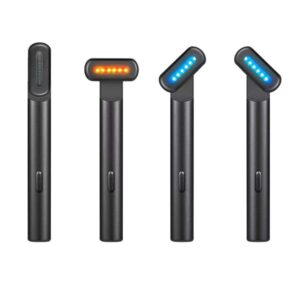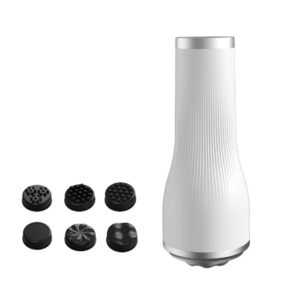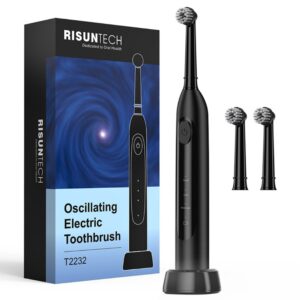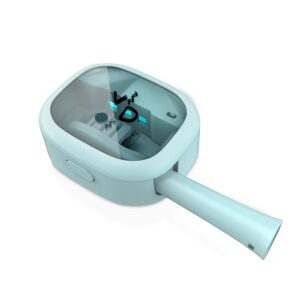Summary
Launching a skincare device line through Original Equipment Manufacturer (OEM) or Original Design Manufacturer (ODM) partnerships offers a strategic pathway for businesses seeking to enter the competitive beauty market. OEMs allow companies to maintain design control and ownership over their products, while ODMs provide a more streamlined approach, offering pre-designed solutions that can be customized to a limited extent. Each model presents distinct advantages and challenges, influencing decisions on product development, investment levels, and time-to-market, thus playing a crucial role in a brand’s success within the skincare industry.
Notably, the choice between OEM and ODM can significantly impact a company’s intellectual property rights and customization capabilities. OEM partnerships facilitate greater creative freedom and proprietary technology development, making them attractive to brands focused on innovation and uniqueness. In contrast, ODM partnerships offer speed and cost efficiencies, appealing to startups or brands with limited resources, although they come with potential risks regarding design control and IP protection. These dynamics have sparked discussions about the best practices for brand positioning and market entry strategies in an ever-evolving industry landscape.
Market research is an essential component in this process, guiding brands in identifying target demographics, understanding market trends, and recognizing gaps in product offerings. Successful skincare brands employ thorough market analysis and consumer insights to tailor their product lines to meet specific consumer needs, thereby enhancing their competitive edge. Additionally, regulatory compliance remains a significant concern for companies navigating the diverse global market, requiring careful attention to safety standards and product testing.
Ultimately, the choice between OEM and ODM partnerships encapsulates a larger narrative of balancing innovation with operational efficiency. As brands pursue collaborations with manufacturers, they must consider various factors, including quality control, regulatory adherence, and strategic communication. By understanding these essential elements, skincare companies can effectively launch their products and build a loyal customer base while adapting to market demands and technological advancements.
Table of Contents
Understanding OEM and ODM
OEM (Original Equipment Manufacturer) and ODM (Original Design Manufacturer) are two prominent manufacturing models utilized in the production of various products, including skincare devices. The fundamental differences between these models lie in the control, ownership, and responsibility associated with product design and development.
OEM (Original Equipment Manufacturer)
In the OEM model, the client company assumes the role of design authority and is responsible for the entire product development process. This includes initiating the concept, conducting research and development (R&D), creating detailed engineering specifications, and selecting essential components. The OEM then manufactures the product according to the specifications provided by the client.
Advantages of OEM
- Design Control: Clients maintain complete control over the product’s design and technical specifications, allowing for alignment with their brand vision and market requirements.
- Intellectual Property Ownership: The client retains ownership of the product’s intellectual property, which is crucial for companies focused on proprietary technology or unique design features.
- Customization: This model supports high levels of customization, enabling the creation of unique products tailored to specific needs.
Disadvantages of OEM
- Resource Intensity: The OEM model requires significant internal resources, including skilled engineering talent and project management oversight.
- Longer Time-to-Market: Due to extensive design and prototyping phases, the time from concept to market can be prolonged compared to ODM.
ODM (Original Design Manufacturer)
In contrast, the ODM model allows the manufacturer to take on both design and production roles. ODMs develop products based on their own R&D and market insights, which can result in faster product development cycles. Clients typically select a product from the ODM’s existing catalog and may request minor modifications such as branding or packaging changes.
Advantages of ODM
- Speed and Cost Efficiency: The ODM approach allows for quicker launches as it leverages existing designs, which can be particularly beneficial for startups or companies with limited R&D capabilities.
- Lower Upfront Investment: Clients face reduced upfront costs since they do not need to finance extensive R&D or custom tooling. The costs are spread across multiple clients.
Disadvantages of ODM
- Limited Customization: Clients have less control over the core design and may have to accept design choices made by the manufacturer.
- Intellectual Property Risks: Since the manufacturer retains more control over the design, clients may have less protection over unique aspects of the product’s IP.
Choosing Between OEM and ODM
Selecting the appropriate model hinges on the specific needs and priorities of the business—whether it is control, speed, cost, or customization. Companies with significant design capabilities and a desire for exclusive products may lean toward OEM, while those seeking to minimize investment and expedite time-to-market might favor ODM. Other options, such as Joint Design Manufacturing (JDM) and Contract Manufacturing (CM), can offer additional flexibility, emphasizing collaborative design or focused manufacturing services. Understanding these distinctions can aid businesses in aligning their manufacturing strategies with their product goals.
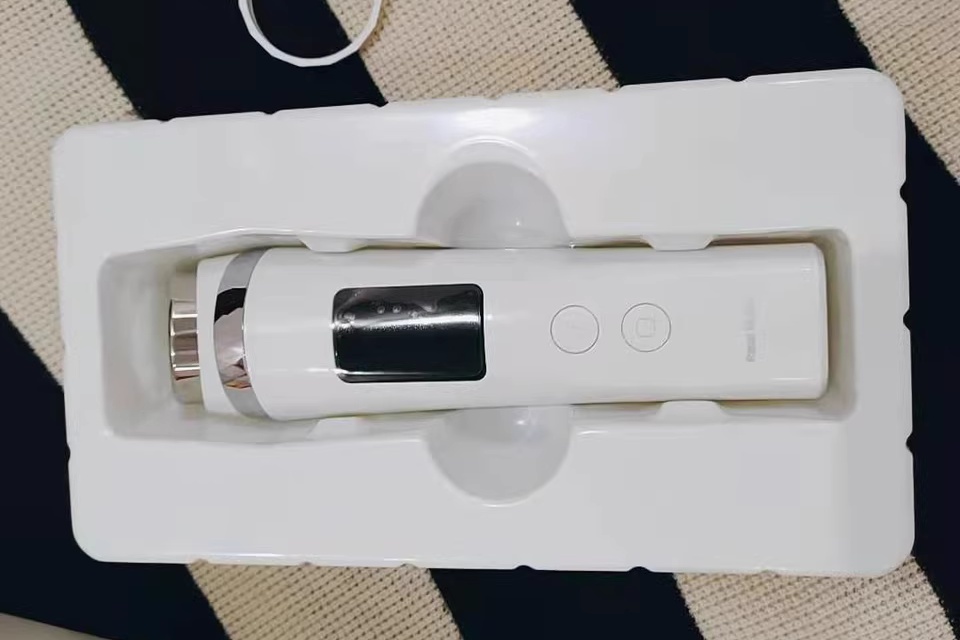
Market Research and Development
Market research is a crucial step in launching a skincare device line through OEM or ODM partnerships. It involves gathering insights about the target audience, analyzing market trends, and identifying gaps that your product can fill. This section outlines key aspects of market research necessary for successful product development and market entry.
Understanding the Target Audience
Identifying the target audience is foundational for developing a skincare device line. This includes creating customer personas that encapsulate demographic information such as age, gender, income level, and location, as well as psychographic details like lifestyle, values, and skincare concerns. For example, a focus on the anti-aging segment might lead to targeting women over 40 who seek effective skincare solutions.
Conducting Comprehensive Market Analysis
Conducting a thorough market analysis helps in understanding the competitive landscape and consumer preferences. This involves examining current industry trends, evaluating key players, and exploring consumer behavior through surveys and data analytics. By assessing market dynamics, including economic shifts and purchasing habits, businesses can tailor their products to meet evolving customer needs.
Identifying Gaps and Opportunities
Effective market research should highlight underserved or emerging segments within the skincare industry. By identifying specific consumer pain points—such as dissatisfaction with current anti-acne solutions—brands can position their products as innovative solutions that meet unfulfilled demands.
Adapting to Market Dynamics
The skincare device market is influenced by various factors, including competitive pressures from low-cost manufacturers and the need for sustainable practices. OEM/ODM partners must continuously invest in technology and product differentiation to remain competitive. This also requires a commitment to balancing sustainability with cost-effective manufacturing processes to maintain affordability for both brands and consumers.
Crafting a Unique Value Proposition
Through insights gained from market research, companies can craft a compelling value proposition that differentiates their products. Highlighting unique features, such as advanced technology or eco-friendly materials, can resonate with target customers and enhance brand loyalty.
Ongoing Research and Development
Finally, the market research process should be ongoing, with continual analysis of market trends and consumer feedback informing product adjustments and new offerings. This iterative approach ensures that the skincare device line remains relevant and competitive within a fast-evolving industry landscape. By prioritizing comprehensive market research and development strategies, skincare brands can effectively launch products that not only meet market demands but also foster customer satisfaction and brand growth.
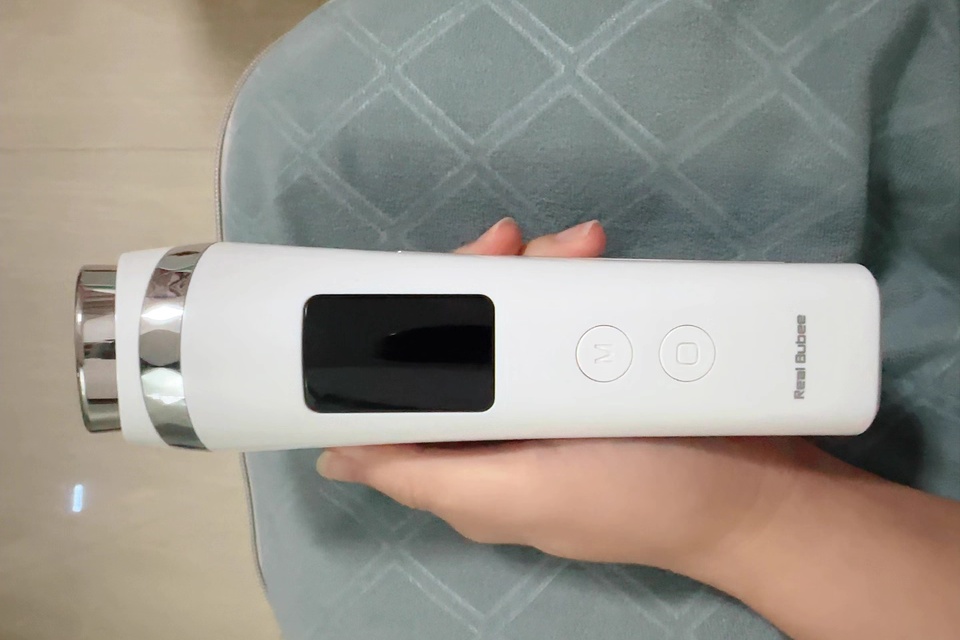
Regulatory Considerations
Navigating regulatory requirements is a critical aspect of launching a skincare device line through OEM (Original Equipment Manufacturer) or ODM (Original Design Manufacturer) partnerships. Each market has its own set of regulations that must be adhered to in order to ensure product safety and compliance, which can vary significantly across regions such as the EU, North America, and Asia-Pacific.
Compliance with Regulatory Standards
To successfully launch skincare devices, manufacturers must familiarize themselves with relevant regulations and guidelines. This includes compliance with agencies such as the FDA in the United States and the CPNP in Europe, which enforce strict rules regarding ingredient safety, labeling, and marketing claims. The complexities involved in adhering to these regulations can delay product registrations and increase costs. In 2024, for instance, approximately 14% of all OEM/ODM partnerships targeting European and North American markets experienced product registration delays due to regulatory compliance issues.
Documentation and Testing
Collaboration with your OEM/ODM partner is essential to compile necessary documentation, including ingredient lists, Safety Data Sheets (SDS), and product information files. Rigorous testing is also mandatory, which may involve stability testing to determine shelf life, dermatological testing for skin compatibility, and microbiological testing to ensure safety from contaminants. These tests not only confirm product efficacy but also serve as evidence of compliance with safety standards.
Quality Control Measures
Quality control plays a vital role in maintaining regulatory compliance and protecting brand reputation. Manufacturers must implement stringent quality checks throughout the production process, ensuring that every unit meets required specifications. Many OEM and ODM partners hold international certifications, such as ISO standards, which guarantee adherence to global quality benchmarks. Third-party testing services can also provide stability and efficacy reports, further enhancing consumer trust upon product launch.
Challenges in Global Expansion
For manufacturers looking to expand their market presence globally, navigating varying regulatory landscapes poses significant challenges. The need to comply with different labeling requirements, ingredient restrictions, and safety assessments across regions can be daunting and may slow down product rollout timelines. It is crucial for companies to stay updated on changes in regulations and to maintain flexibility in their manufacturing processes to adapt to these evolving standards.
By understanding and addressing these regulatory considerations, companies can ensure a smoother path to launching their skincare device lines, thereby enhancing their market competitiveness and ensuring consumer safety.
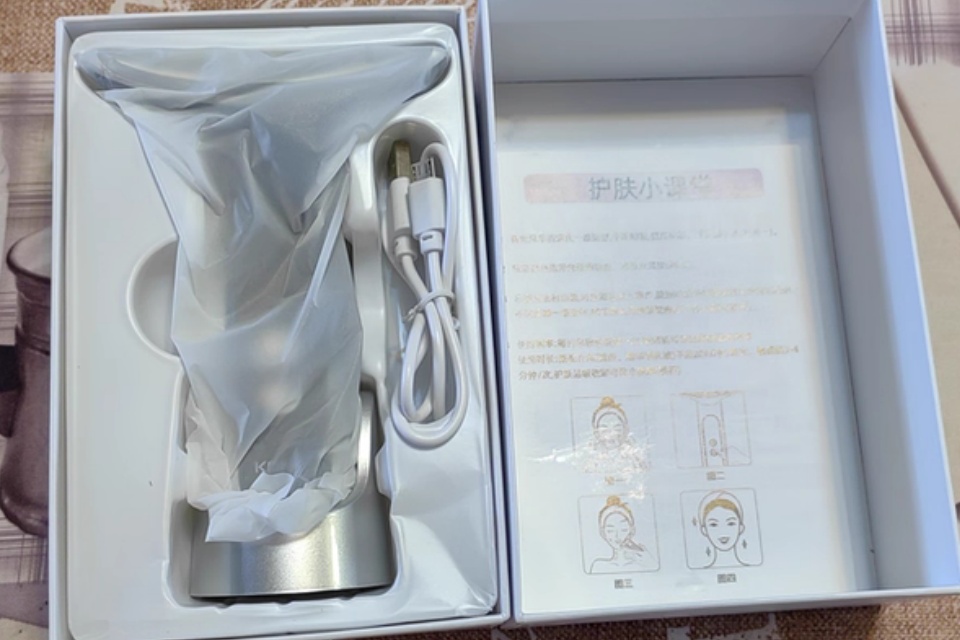
Building Partnerships
Establishing effective partnerships is a critical step in launching a successful skincare device line through Original Equipment Manufacturer (OEM) or Original Design Manufacturer (ODM) collaborations. By carefully selecting and nurturing these partnerships, businesses can streamline operations, enhance product quality, and accelerate time-to-market for their innovative offerings.
Key Factors in Partner Selection
When choosing an OEM or ODM partner, several key factors must be considered to ensure a fruitful collaboration:
- Regulatory Compliance: It is essential that the chosen partner adheres to relevant industry regulations and standards to avoid compliance issues later on.
- Industry Experience and Expertise: A partner with a strong track record in the skincare or cosmetics industry will have the knowledge and skills necessary to navigate the complexities of product development and manufacturing.
- Manufacturing Capabilities and Capacity: Assessing the partner’s ability to scale production and meet demand is vital. Their facilities should be equipped with cutting-edge technologies that facilitate efficient manufacturing processes.
- Quality Assurance: Rigorous quality control measures must be in place to maintain product integrity and customer satisfaction. This includes ongoing communication and collaboration throughout the manufacturing process to address any quality concerns promptly.
- Communication and Collaboration: Open lines of communication ensure that both parties can share insights and updates, leading to a more aligned vision for product development.
Advantages of Collaborating with Experienced Manufacturers
Partnering with a seasoned OEM or ODM manufacturer can provide numerous benefits:
- Access to Advanced Technologies: Established manufacturers often utilize the latest production technologies, which can enhance product quality and efficiency.
- Cost Efficiency: By leveraging the resources and expertise of a contract manufacturer, brands can achieve economies of scale, reducing overall production costs compared to in-house manufacturing.
- Focus on Core Competencies: Collaborating with specialized partners allows brands to concentrate on branding, marketing, and distribution while leaving production and logistics to the experts.
Mitigating Risks Through Strategic Partnerships
To safeguard against potential pitfalls, it is crucial to incorporate risk mitigation strategies into the partnership agreement.
- Indemnification Clauses: These clauses shift liability for manufacturing defects to the manufacturer, protecting the brand from financial losses due to product failures.
- Intellectual Property Protection: Including specific clauses in contracts to protect proprietary formulations and designs is essential for maintaining brand uniqueness and securing future innovations.
By carefully selecting the right OEM or ODM partner and fostering a collaborative relationship, skincare brands can effectively navigate the complexities of product development and bring high-quality devices to market that resonate with consumers.
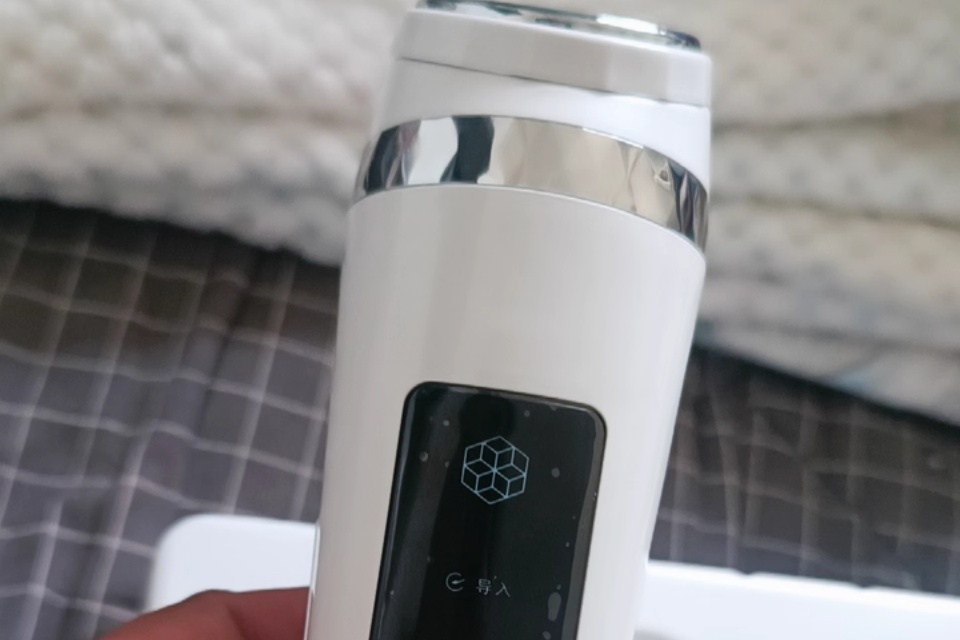
Product Development Process
The product development process for skincare devices through Original Equipment Manufacturer (OEM) or Original Design Manufacturer (ODM) partnerships involves several key stages, ensuring that the final product aligns with market needs and brand identity.
Concept Development
The first step in the product development process is thorough research and concept development. This involves understanding the target audience and current market trends. Factors such as specific skin concerns (e.g., acne, aging, hydration), preferred ingredients (natural, organic, cruelty-free), and consumer preferences play a crucial role in shaping the product’s direction. Companies often collaborate with their manufacturing partners to refine their ideas based on insights gathered during this phase.
Prototype Creation
Once a clear concept is established, the next step involves working with the OEM or ODM partner to develop custom sample formulations. This process includes selecting active ingredients that align with the intended product purpose, adjusting the texture, scent, and absorption rate, and ensuring safety and efficacy through laboratory testing. Multiple prototypes may be created to refine the formula and ensure compliance with regulatory standards while catering to consumer preferences.
Quality Control and Testing
Quality control is an integral part of the product development process. Rigorous testing must be conducted to ensure that the skincare devices are safe and effective. This includes stability testing to assess shelf life, dermatological testing for suitability across different skin types, and compliance checks with local and international regulations (e.g., FDA, EU regulations). Continuous monitoring during production ensures that every batch adheres to the agreed specifications, maintaining high quality and safety standards.
Packaging Design
Packaging is not only a protective measure but also a crucial element in brand identity. Collaborating with designers, brands create packaging that resonates with the product’s branding and appeals to consumers. Unique and well-crafted packaging can significantly influence purchasing decisions and brand recognition in a competitive market. Every design choice, from material to color, serves to communicate the product’s value and ethos.
Fulfillment and Logistics
The final phase of the product development process encompasses packaging and logistics. Ensuring that the product reaches its destination in perfect condition is vital for customer satisfaction. This involves overseeing the entire fulfillment process, from packaging to delivery, guaranteeing that the skincare devices are available for consumers without delay, thus supporting effective market entry strategies.
Through these stages, the partnership with OEMs or ODMs streamlines the journey from concept to market-ready product, empowering brands to deliver innovative skincare solutions while maintaining quality and compliance.
Launching Your Product Line
Launching a skincare product line through OEM (Original Equipment Manufacturer) or ODM (Original Design Manufacturer) partnerships involves a strategic approach that encompasses market research, product development, and effective marketing tactics.
Market Research and Planning
The first step in launching your product line is thorough market research. Understanding the demographics, skin concerns, and preferences of your target audience is essential. This information helps in defining your brand’s goals and tailoring your product offerings to meet specific customer needs. Once the target market is identified, brands can explore potential product lines and demographics to ensure continuous growth in a competitive landscape.
Product Development
After establishing a clear understanding of the market, the next phase is product development. This includes formulating the products, which should be informed by customer feedback and industry trends. It is crucial to create appealing branding and packaging that resonates with the target audience while ensuring regulatory compliance and product quality. Engaging customers during the development phase through feedback can lead to necessary adjustments and foster a sense of involvement with the brand.
Marketing Strategy
An effective marketing strategy is paramount for a successful product launch. Brands should leverage digital marketing channels, including social media, email marketing, and influencer partnerships, to maximize their reach. Crafting tailored messaging that speaks directly to the audience’s needs can enhance engagement and drive sales. Additionally, social media platforms like Instagram and TikTok offer opportunities for user-generated content and collaborations with influencers to boost brand awareness.
Launch Execution
When it comes to executing the launch, creating a buzz is critical. Teaser campaigns, pre-launch events, and promotional activities can generate excitement around the new product line. Utilizing analytics tools to track customer feedback and sales data post-launch can help refine ongoing marketing strategies and product offerings to align with consumer behavior and preferences.
By following these steps—conducting thorough market research, focusing on product development, implementing a robust marketing strategy, and executing an engaging launch—brands can successfully introduce their skincare product lines and foster long-term growth and customer loyalty in the competitive skincare market.
Post-Launch Considerations
Once a skincare device line has been launched through OEM or ODM partnerships, several critical considerations must be addressed to ensure ongoing success and growth in the market.
Customer Engagement and Feedback
Engaging with customers post-launch is essential for understanding their experiences and preferences. Regularly seeking feedback through surveys, reviews, and social media interactions allows brands to gain insights into customer satisfaction and areas for improvement. Actively responding to customer inquiries and fostering a sense of community on social media platforms can also enhance brand loyalty and strengthen relationships with consumers.
Continuous Product Education
Educating customers about the benefits and usage of the skincare devices is vital for building trust and encouraging usage. Brands should provide clear and informative product descriptions, usage instructions, and educational content such as tutorials or blog posts to illustrate product effectiveness. This education not only informs customers but also enhances their overall experience with the product.
Performance Monitoring and Adjustments
Post-launch, it is crucial to monitor the performance of marketing campaigns and product reception. Utilizing analytics from email marketing platforms and tracking sales data can help identify trends and measure the effectiveness of various marketing strategies. Adjustments based on these insights should be made to optimize campaigns, refine product offerings, and ensure alignment with customer expectations.
Building Brand Loyalty
Fostering brand loyalty through exceptional customer service and engagement is vital. Developing loyalty programs that reward repeat customers and encourage word-of-mouth referrals can significantly enhance brand perception and sales. Moreover, showcasing positive customer reviews and testimonials can build credibility and influence potential buyers.
Market Trends and Innovations
Staying attuned to market trends and innovations in the skincare device sector is essential for ongoing relevance and competitiveness. This requires continuous research and development, as well as flexibility to adapt product lines based on emerging consumer needs and preferences. Companies should be prepared to innovate and introduce new features or products to meet the evolving demands of the market.
By focusing on these post-launch considerations, skincare brands can effectively navigate the complexities of the market, improve customer satisfaction, and achieve sustainable growth through their OEM or ODM partnerships.
Case Studies
Regulatory Adaptation in OEMs
A critical aspect of successful partnerships in skincare manufacturing is the ability of Original Equipment Manufacturers (OEMs) to navigate the complex regulatory landscape. A major section of the collected data highlights how OEMs are adapting to evolving standards set by agencies such as the FDA, CPNP, REACH, and regulations from ASEAN and GCC countries. These adaptations are crucial for ensuring compliance and facilitating market entry, particularly for brands targeting international consumers.
Innovations in Product Development
Case studies from leading Original Design Manufacturers (ODMs) operating in regions like Korea, Italy, and the U.S. illustrate significant advancements in product development. For instance, these manufacturers have managed to reduce formulation cycles by 30–40% through the implementation of AI and micro-batch testing tools. Such innovations not only enhance efficiency but also allow for quicker responses to market trends and consumer preferences.
Packaging Sustainability
The report also reviews recent packaging innovations, including refillables, dissolvables, and mono-material tubes, which contribute to sustainability goals while also impacting logistics. These developments are essential for brands seeking to align with eco-conscious consumers and reduce their environmental footprint.
Value-Added Services
Another noteworthy case is Trilogy, which has successfully leveraged its private label and custom formulation services. By offering tailored solutions, Trilogy allows businesses to create bespoke products that meet specific market needs. Their FDA-registered manufacturing facility ensures that all products contain scientifically-backed active ingredients at effective levels, thereby maintaining high quality and safety standards.
Marketing and Client Engagement
The ability to identify target audiences is foundational to successful skincare marketing strategies. Engaging with clients through well-defined marketing messages tailored to different segments has been a recurring theme in the case studies. By understanding consumer behavior and preferences, brands can create campaigns that resonate deeply and build lasting trust. This strategic approach has been essential for both OEMs and ODMs in establishing strong market positions.



